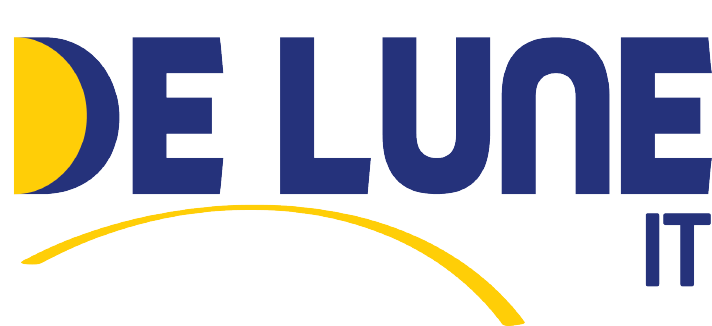The COVID-19 pandemic accelerated the remote work trend as it compelled a large portion of the global workforce to adopt to working from home, at least temporarily. This was perhaps best exemplified by the exceptional growth of Zoom™ which marked a 326% increase in revenue in 2020, havening earned 467,000 customers with ten or more employees.
Even after lockdowns and other restrictions were lifted however many employees continued to work remotely, prompting significant changes in how businesses organize and manage their workforce. In 2023, Zoom generated $4.5 billion in revenue and in the U.K., 14% of the working population was still working from home while 28.2% adhered to a hybrid model. Here in the U.S., 12.7% of full-time employees worked from home with 28.2% adhered to a hybrid model. While the long-term effects on employee productivity are still being explored, it is evident that WFH is here to stay. A recent Upwork study projects that 32.6 million Americans or 22% of the workforce will work remotely by 2025 with a whopping 98% of U.S. employees expressing a desire to work remotely at least part-time.
Clearly, WFH is here to stay but it presents challenges for both companies and employees.
WFH Challenges for Companies
- Lack of structure and routine
Traditional office environments provide structure and routine, which are crucial for productivity. Remote workers must establish their own work schedules and create boundaries between work and personal life.
- Communication and collaboration
Remote work settings can make communication and collaboration more challenging due to time zone differences, limited face-to-face interaction, and reliance on digital tools. Misunderstandings or delays in communication can impede progress and teamwork.
- Feelings of isolation
Remote workers may miss the social connections and camaraderie found in a physical office setting, leading to feelings of isolation and loneliness, which can impact overall employee morale and productivity.
WFH Challenges for Employees
- Work-Life balance
Maintaining a healthy work-life balance is challenging when the boundaries between work and personal life blur. Remote work can lead to longer working hours and an “always-on” mentality, resulting in burnout and decreased productivity.
- Productivity
Remote work productivity is crucial for both individual performance and business outcomes. Effective strategies and tools are necessary to maintain high levels of efficiency, meet deadlines, and achieve desired results.
- Isolation and Loneliness
The lack of face-to-face interactions and spontaneous conversations with colleagues can impact morale and mental well-being. Remote workers must actively seek opportunities for socialization to combat these feelings.
Strategies for Maximizing Remote Work Productivity
Despite its challenges, working from home offers numerous benefits, such as flexibility and reduced commute times. To thrive in a remote work setting, it is essential to establish best practices that promote efficiency and well-being.
Here are six key strategies to help your employees maximize productivity while working remotely.
- A Productive Workspace
Help your staff create a distraction-free and pro-productivity workspace in their home. Companies can’t help with housing but they can invest in ergonomic furniture and proper lighting for employees.
- Schedule Adherence
Many companies try to get the upper hand by making employees work or at least be available for longer and longer hours. This may pay off in the short-term but will lead to burnout and even resignations over the medium and longer terms. Instead, establish specific working hours and boundaries. Factor in regular breaks like a dedicated coffee break that can be imposed across the organization.
- Utilize Effective Communication Channels
There are plenty of tools to choose from but take the time to pick the best tool for your company’s work and culture. Staff input can go a long way in the productive use of communication tools.
Choose appropriate tools such as email, instant messaging, and video conferencing based on urgency and establish clear communication guidelines and response times. This will prevent dedicated employees from having to waste time waiting for a reply to an email and a pattern of delayed responses can be easily brought to the attention of a supervisor.
- Set Clear Goals and Priorities
Train managers to define SMART goals aligned with team objectives, break down tasks, prioritize based on importance and urgency, communicate goals to foster accountability, and regularly review and adjust goals for focus and motivation.
- Implement Time Management Techniques
Provide employees education on techniques like Pomodoro, time blocking, and Eisenhower Matrix to minimize distractions, and utilize productivity tools to track and manage time effectively.
- Promote Work-Life Balance and Self-Care
Talk to your employees and establish company-wide boundaries between work and personal life. An employee who has the time and energy to spend time with their families and engage in self care are the most productive and least likely to leave.
Collaborative Tools for Remote Teams
Leveraging the right tools can make a significant difference in how remote teams manage tasks, communicate, and stay connected. From project management platforms to virtual team-building applications, these tools are designed to address the unique challenges of remote work.
- Project management and collaboration tools
Tools like Trello, Asana, and Monday.com enable remote teams to efficiently manage tasks, coordinate projects, and collaborate seamlessly.
- Communication and video conferencing tools
Platforms like Slack and Zoom facilitate real-time communication, virtual meetings, and remote collaboration.
- Cloud storage and document sharing platforms
Google Drive and Dropbox offer cloud storage, file synchronization, and real-time document editing and sharing capabilities.
- Virtual team building and socialization tools
Tools like Donut and Watercooler facilitate informal interactions, one-on-one conversations, and virtual team activities, promoting socialization and fostering a sense of community among remote team members.
Thriving Remotely: From Home Office to High Performance
WFH is here and it’s growing. Companies that proactively address its challenges with agility and foresight can reap its rewards. By leveraging the right strategies and tools, businesses can enhance productivity and ensure that their employees thrive in this new working paradigm.
